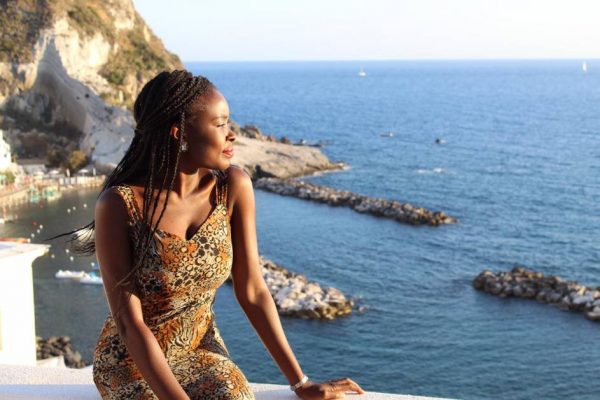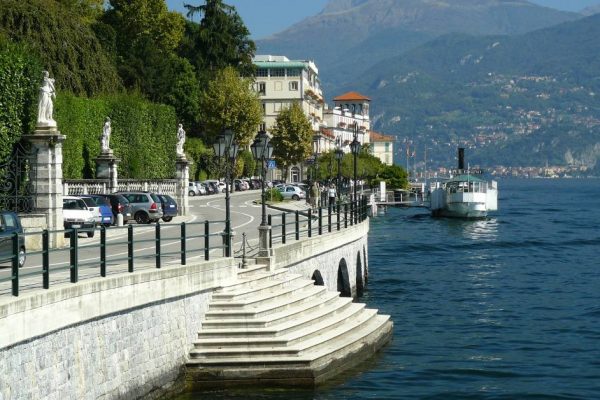Festa della Repubblica is the Italian National Day and Italy Republic Day, which is celebrated on 2 June each year, with the main celebration that takes place in Rome. The Festa della Repubblica is one of the national symbols of Italy. Similar to Independence Day in the US and other countries, it celebrates the official formation of the Republic of Italy after World War II.
Table of Content
Italy Republic Day in Rome
The biggest and most spectacular Republic Day celebrations take place in Rome, the seat of the Italian government and residence of Italy’s president.

Republic Day is one of the top June events in Rome, and worth being in the city for – if we could. The city celebrates with a big parade in the morning, presided over by Italy’s president. It’s usually held along Via dei Fori Imperiali, the street that runs alongside the Roman Forum with a large Italian flag is hanging down from the Colosseum. On Republic Day, the Italian President lays a wreath on the monument to the unknown soldier (from World War I), at the Monument to Vittorio Emmanuele II.
In the afternoon, several military bands play music in the gardens of the Palazzo del Quirinale, the residence of the Italian President, which will be open to the public on June 2.
One of the highlights of the festivities is the display by the Frecce Tricolori, the Italian Air Force acrobatic patrol. Nine planes emitting red, green, and white smoke fly in formation over the Vittoriano Monument, creating a beautiful design resembling the Italian flag.
What are the 5 Symbols of Italy’s Republic Day?
1. Giro d’Italia of the Frecce Tricolori

The Frecce Tricolori – 3 coloured arrows constituting the 313th Acrobatic Training Group, are the Italian Air Force’s national acrobatic patrol (PAN). It was born in 1961 following the Air Force’s decision to create a group permanent for the collective aerobatics training of its pilots. With ten planes, of which nine in formation and one soloist, they are the most numerous aerobatic patrol in the world, and their flight program, comprising twenty acrobatics and lasting about half an hour, has made them among the most famous.
The Giro d’Italia detailed program for this year
- May 26: Genoa – Florence – Perugia – L’Aquila
- May 27: Cagliari – Palermo
- May 28: Catanzaro – Bari – Potenza – Naples – Campobasso
- May 29: Loreto – Ancona – Bologna – Venice – Trieste
- June 2: Rome
Frecce Tricolori in Rome
During the event for the 74th anniversary of the Republic Day, in the first part of the morning of Tuesday 2 June, the tricolor arrows will be engaged in some passages over Rome: the time of the beginning of the ceremony is scheduled at 9.00 am – 9.15 am.
Where to watch Frecce Tricolori Live and Other Activities
Rai will offer in-depth information dedicated to Republic Day throughout the day: the ceremony at the Altare della Patria, with the passing of the tricolor arrows on Rome, will be broadcast live on TV starting at 8.55 am on June 2 on Rai 1, within “UnoMattina”.
2. The Victorian or Altare della Patria

The National Monument to Vittorio Emanuele II, better known by the name of Vittoriano, is a national monument located in Rome, in Piazza Venezia.
By metonymy the monument is often called Altare della Patria since it welcomes the Unknown Soldier. The term Victorian could lead one to think that it is a tribute to victory: in reality, it derives from the name of Vittorio Emanuele II of Savoy, the first King of Italy, to whom the monumental complex is dedicated.
The central theme of the whole monument is represented by the two inscriptions on the propylaea: “PATRIAE UNITATI” and “CIVIUM LIBERTATI”, which means “To the unity of the fatherland” and “To the freedom of citizens”.
3. The Banner of the Italian Republic

Stendardo Quirinale is the presidential banner that is always present in Italy’s military and ceremonial order. It is the distinctive sign of the presence of the Head of State and therefore follows the President of the Republic in all his movements.
It is raised on cars, ships, and planes that have the President on board; outside the prefectures, when the head of state visits a city; inside the rooms where he officially intervenes.
The new presidential banner, which is inspired by the flag of the Italian Republic of 1802-1805, wants to link the banner of the Head of State more closely to the tricolor, both as a precise historical reference to Italy’s Risorgimento, and as a symbol of national unity. Its square shape and the blue border symbolize the Armed Forces, of which the President of the Republic is Head.
4. The emblem of the Italian Republic

On the 5th of May 1948, the republican Italy was awarded its emblem at the end of a creative process that had required 24 months, two public competitions, and a total of 800 sketches submitted by roughly 500 citizens, artists, or amateurs.
The process began in October 1946, when the government led by Alcide De Gasperi set up an ad hoc Commission chaired by Ivanoe Bonomi which projected the future emblem as the fruit of a concerted effort that was to be as broad as possible.
To this end, it was decided to announce a public competition open to all citizens, based only on a few elements: the absolute exclusion of symbols of the party, the inclusion of the star of Italy, and “drawing inspiration from the essence of the land and of the municipalities”. The first five classified would win a prize of 10,000 Lire (Italy’s former monetary value).
The emblem of the Italian Republic is characterised by three elements: the star, the cog-wheel, and olive and oak branches.
The olive branch symbolises the nation’s will for peace, embracing both internal concord and international brotherhood.
The oak branch that rims the right-hand-side of the emblem embodies the strength and the dignity of the Italian people. Moreover, both plants are among the most typical of Italy’s forest species.
The steel cog-wheel symbolises work and represents the first article of the Constitutional Charter: “Italy is a Democratic Republic, founded on work”.
The star is one of the most ancient emblems of Italian iconography and it has always been associated with the personification of Italy, crowning its head with its bright shine. This was how it was represented in the iconography of the Risorgimento and in the coat of arms of the Kingdom of Italy (the so-called “big star”).
The star later characterised the first republican decoration during the reconstruction: the Star of Italian Solidarity, a decoration awarded to Italian military expatriates who made an outstanding contribution to the reconstruction of Italy after World War II.
5. The Italian National Anthem, anthem of Mameli

The Italian National Anthem, also known anthem of Mameli. The Canto degli Italiani, better known as the Anthem of Mameli was created in the city of Genoa. Written in the autumn of 1847 by the then twenty-year-old student and patriot Goffredo Mameli. It was set to music shortly after in Turin by another Genovese – Michele Novaro.
Further information on Italy Republic Day
Remember this is a national holiday and transportation services will have reduced hours.
The celebrations in Rome will be different this year due to the current situation. Pending the passage of the tricolor arrows, the celebrations begin on the eve of June 2, in the Quirinale garden with a symphonic music concert dedicated to all the victims of the coronavirus broadcast live on TV. The event is not open to the public but will be offered live, on June 1 from 6.45 pm, on television on Rai 1 and on Radio 3, as well as streaming on the Quirinale website.
Sources: Quirinale; and Festa Della Republica.













I blog frequently and I truly thank you for your content.
Your article has really peaked my interest. I’m going to take a note
of your site and keep checking for new details about once
per week. I subscribed to your Feed as well.